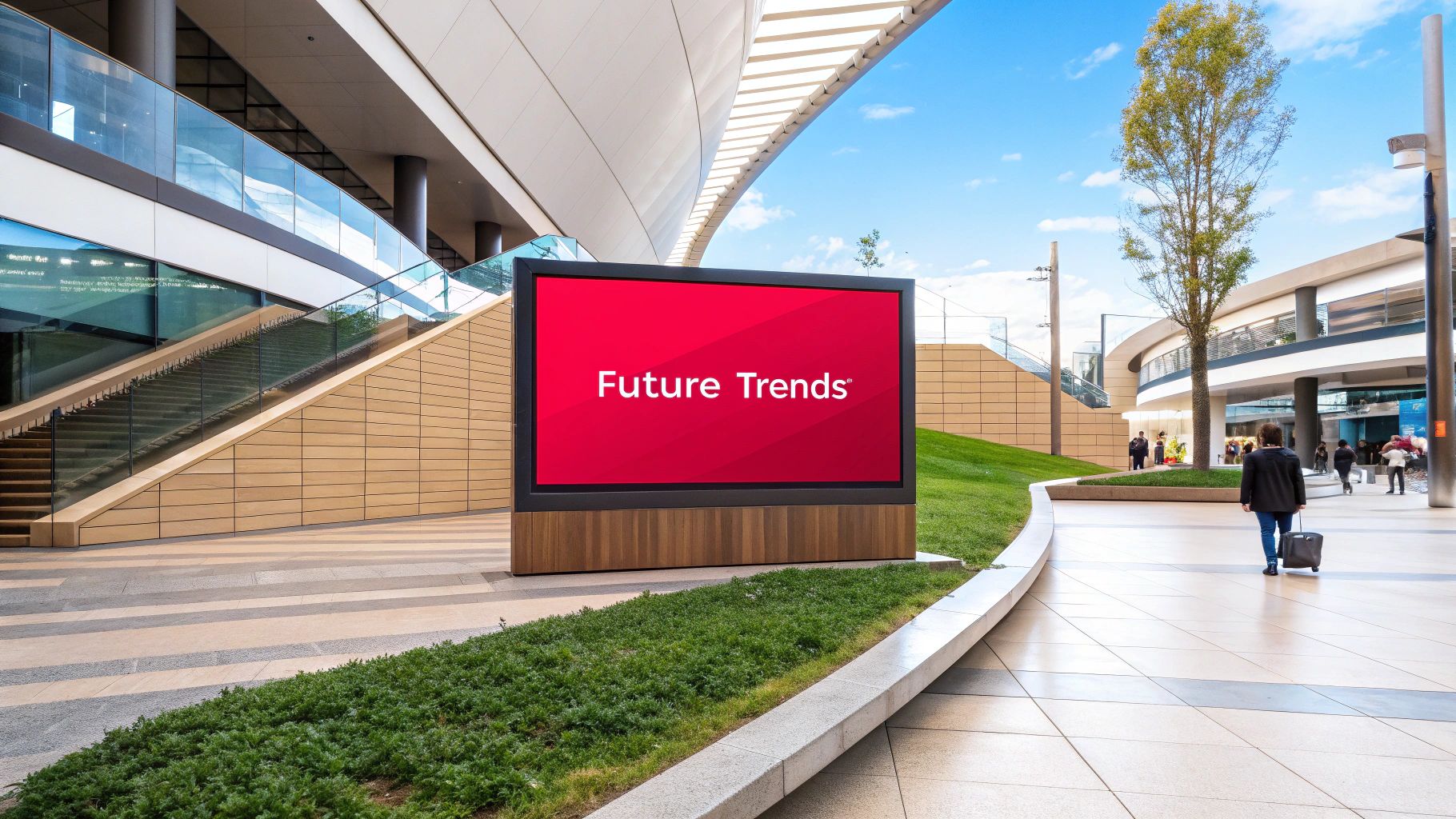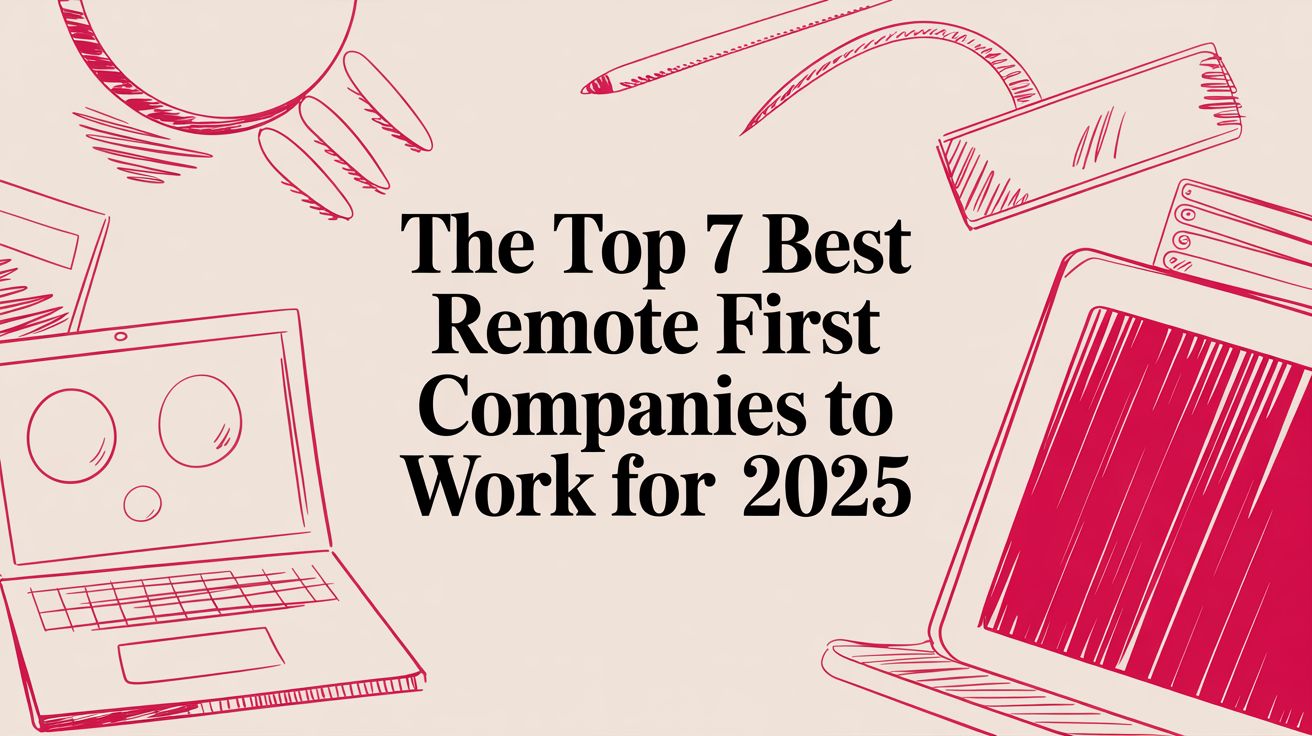Master Remote Talent Acquisition: Global Hiring Simplified
Max
The Evolution of Remote Talent Acquisition

Remote work was once a rare benefit, but acquiring remote talent is now a crucial part of any business strategy. This shift represents a significant change in how companies find and hire employees. Several factors have driven this change, including advancements in technology and evolving employee expectations. Let’s explore some key milestones in this transformation.
The Rise of Enabling Technologies
The internet, video conferencing, and collaborative software like Slack provided the foundation for remote work. These tools made it possible for teams to communicate and work together effectively, no matter where they were located.
Project management platforms, for example, allow teams to track progress and share real-time updates, creating seamless collaboration across different time zones. This initial phase set the stage for more complex and effective remote work practices.
Shifting Worker Expectations
The desire for better work-life balance and increased flexibility has grown considerably. This has empowered employees to seek out jobs that fit their lifestyles. The COVID-19 pandemic further sped up this trend, making remote work not just desirable but often necessary.
This change is evident in the significant rise in remote job applications. LinkedIn reported a 146% increase in remote job applications between 2022 and 2023. This statistic suggests companies are adopting remote talent acquisition as the new standard, offering benefits like improved work-life balance and access to a larger talent pool.
A Gartner survey revealed that 74% of CFOs intended to keep remote work options available after the pandemic. For a deeper dive into these trends, check out these statistics: Talent Acquisition Statistics. As a result, talent acquisition strategies now often include comprehensive remote onboarding and flexible work arrangements to attract and keep top talent.
The Globalization of Talent Pools
Geographic boundaries are no longer a limiting factor when companies search for talent. This globalization has opened access to skilled professionals worldwide, creating a more competitive and diverse job market.
Companies can now assemble teams with the very best people, no matter where they live. This change also requires fresh approaches to recruitment and onboarding.
The Emergence of Remote-First Culture
Some organizations have embraced a fully remote-first culture. These companies have structured their entire operations, from communication to performance management, around remote work principles.
This model offers substantial advantages, such as lower overhead costs and higher employee satisfaction. Building a thriving remote-first culture, however, requires careful planning and execution.
Building Your Global Talent Strategy That Actually Works
Forget outdated recruitment playbooks. Remote talent acquisition demands a fresh perspective. Building a successful global team requires careful planning, and that’s what we’ll explore here. This section offers a practical guide to crafting a cross-border recruitment strategy that delivers results.
Mapping the Global Talent Pool
Top companies understand the value of pinpointing where the best talent resides. This means looking beyond traditional geographic boundaries and exploring talent hotspots across the globe. For example, if your company is searching for skilled software developers, consider exploring regions like Eastern Europe or Asia, renowned for their technical expertise. Expanding your search globally unlocks access to a broader pool of candidates and potentially lowers hiring costs.
Understanding local labor laws and regulations is also essential. Navigating these legal landscapes requires thorough research and potentially consulting with legal experts. This proactive approach ensures compliance and minimizes potential legal risks, building a legally sound global talent pipeline.
Crafting a Compelling Employer Narrative
Attracting the best global talent takes more than just competitive salaries. It requires a strong employer narrative that resonates with candidates from diverse cultural backgrounds. Clearly communicate your company culture, values, and mission in a way that appeals to a global workforce.
This includes tailoring your message to different cultural contexts and highlighting aspects of your company that hold universal appeal, such as opportunities for professional development and a positive work environment. This also connects directly to your remote-first value proposition. What distinguishes your company as an exceptional place to work remotely? Do you offer flexible work hours or provide resources for a home office setup? Clearly articulating these benefits is crucial for attracting and retaining top remote talent.
International hiring has become a cornerstone of remote talent acquisition, providing access to a global talent pool, cutting costs, and boosting diversity. According to Remote’s 2024 Global Workforce Report, 71% of teams engage in international recruitment. This trend is even more pronounced in specialized fields like technology, HR, IT, and finance. For instance, 89% of tech sector employers are expanding their global workforce. This shift is particularly significant for senior roles, with 85% of companies hiring senior-level employees internationally in the past year. More detailed statistics can be found here.
Overcoming Cross-Border Challenges
Managing a global team presents unique challenges. One common hurdle is coordinating across different time zones. Effective communication and collaboration require careful planning and flexible scheduling. Utilizing asynchronous communication tools, like Slack, and strategically scheduling overlapping work hours can facilitate smoother teamwork.
Cultural alignment is another key aspect. Building a cohesive team requires understanding and respecting cultural nuances. This might involve providing cultural sensitivity training and fostering an inclusive environment where all team members feel valued. These practices create a truly global and collaborative work environment.
Remote Assessment Techniques That Reveal True Potential

Evaluating candidates you’ve never met face-to-face requires a fresh approach to hiring. This means moving beyond the traditional resume review and remote interview to truly grasp a candidate’s potential. This section explores practical, evidence-based techniques for assessing remote talent, focusing on the key skills and qualities essential for remote work success.
Skills-Based Evaluations: Beyond the Resume
Many thriving distributed companies are now using skills-based evaluations. These assessments focus on measuring a candidate’s practical abilities, going beyond resumes and self-reported experience. They look at skills directly relevant to the job. For example, a software developer might tackle a coding challenge using GitHub, while a content writer could be asked to produce a sample article. This gives employers a tangible way to measure a candidate’s skills and see their work firsthand.
These assessments also offer valuable insights into a candidate’s problem-solving approach and how they apply their knowledge in practical situations. This shift towards demonstrating skills is especially important in remote hiring, where directly observing work habits is less common.
Measuring Collaboration and Communication
Effective collaboration and communication are the cornerstones of any successful remote team. Assessing these skills during the hiring process is vital. This can involve incorporating collaborative tasks into interviews, such as group problem-solving exercises.
Evaluating a candidate’s written communication is also important. Reviewing email exchanges or written assignments provides valuable information. Observing candidate interactions with the team during interviews reveals their communication style and ability to work effectively in a virtual environment.
Structured Remote Interviews for Eliminating Bias
Structured remote interviews involve asking all candidates for a specific role a standardized set of questions. This approach promotes a more objective evaluation process, minimizing unconscious bias. It ensures that all candidates are evaluated against the same criteria, promoting fairness and consistency throughout the hiring process.
Instead of open-ended questions, structured interviews use targeted questions that assess specific skills and experience. This focused evaluation identifies candidates who truly match the role’s requirements. Including team members in interviews allows for multiple perspectives and a more well-rounded assessment of the candidate’s team fit.
Identifying Self-Management Capabilities
Successful remote workers demonstrate strong self-management skills. They prioritize tasks, manage their time effectively, and maintain motivation while working independently. Assessing these capabilities is essential in remote hiring.
Behavioral interview questions, such as inquiries about managing competing priorities or working independently on projects, can provide insights into a candidate’s self-management abilities. Additionally, discussing a candidate’s preferred work environment and how they structure their day can reveal their organizational skills and ability to thrive remotely. The growing trend of remote work has also increased the focus on hybrid work models and accurate skills assessment. By 2025, it’s estimated that 76% of office workers will be in hybrid environments, with a similar percentage of employers already implementing these models. The importance of precise skills assessment has also grown, with 76% of talent professionals emphasizing the need for effective skills assessment tools, according to LinkedIn research. This ensures new hires have the skills to adapt to evolving job demands. Learn more about future trends here.
The Remote Recruitment Tech Stack That Delivers Results

Video calls were once the primary tool for remote hiring. Now, a diverse set of tools supports finding talent across the globe. This section explores real-world examples of how companies effectively utilize technology to hire globally and how these tools can enhance your remote recruitment process.
AI-Powered Sourcing For Global Reach
Many companies are now using AI-powered sourcing platforms to identify the best candidates across the world. These platforms can search various online sources, including LinkedIn and other professional networking sites, to find individuals with specific skills and experience. This significantly broadens the reach of recruiters.
This proactive approach enables recruiters to connect with passive candidates. For example, an AI tool might identify a skilled software engineer in another country who is looking for remote work, even if they haven’t directly applied to the company.
AI can also filter and rank candidates based on factors like skills, experience, and cultural fit. This saves recruiters valuable time, allowing them to focus on building relationships. Tools like AI Job Interview can further streamline the interview process, ensuring a good fit for both the candidate and the company.
Virtual Assessments For Accurate Predictions
Traditional interviews don’t always accurately predict job performance, especially in remote work environments. Virtual assessment technologies provide a more accurate view of a candidate’s skills. These tools offer assessments like coding challenges, writing samples, and simulations that evaluate problem-solving and decision-making.
These assessments provide objective data on a candidate’s skills, enabling companies to make data-driven hiring decisions. They also create a more engaging candidate experience. For job seekers, resources like How to master remote job searching can be immensely helpful. This positive candidate experience can reflect well on your company culture.
Automating Workflows For Seamless Experiences
Automating workflows significantly improves both the candidate experience and recruitment efficiency. Automated workflows can handle tasks like scheduling interviews, sending reminders, and tracking candidate progress. A well-designed system can automate interview scheduling across time zones, send personalized emails, and provide real-time status updates.
This automation creates a seamless and professional experience for candidates, no matter where they are located. It also allows recruiters to focus on strategic tasks, such as building relationships and promoting the company’s employer brand. Streamlining repetitive tasks creates a more effective and efficient remote talent acquisition process. This leads to faster hiring and an overall improved experience.
Measuring ROI and Building For The Future
It’s crucial to measure the return on investment (ROI) of any recruitment technology. Track important metrics like time-to-hire, cost-per-hire, and the quality of hires. This data-driven approach helps companies understand which technologies are most effective.
Building a robust remote recruitment tech stack involves choosing tools that meet current needs and anticipate future requirements. As work continues to evolve, new technologies will emerge. Staying informed about these trends and remaining adaptable is essential for companies looking to excel in remote talent acquisition.
Crafting a Remote-First Employer Brand That Resonates
In the competitive market for remote talent, a strong employer brand is essential for attracting top-tier candidates. Building a genuine remote-first image sets your company apart and demonstrates a commitment to this increasingly popular work style. Let’s explore how successful organizations craft an authentic brand narrative that speaks to potential remote employees worldwide.
Showcasing Authentic Remote Culture
Companies that truly excel in remote work showcase their distributed culture authentically. This goes beyond simply mentioning “flexibility.” Instead, show what remote work actually looks like within your organization.
Consider sharing employee testimonials about their remote experiences. Alternatively, create video content showcasing a day in the life of a remote team member. This transparency builds trust and helps potential hires envision themselves thriving in your remote environment.
Actively involve your remote employees in shaping and sharing your employer brand. They are your most credible advocates! Encourage them to share their stories and perspectives on platforms like LinkedIn and other professional networking sites. This organic approach provides a genuine glimpse into your company’s remote work culture.
Content Focused on Genuine Experiences
Your content should highlight genuine remote employee experiences. Rather than just listing the benefits of remote work, delve into the real challenges and rewards. This might include blog posts discussing overcoming common remote work obstacles, tips for successful virtual collaboration, or advice on maintaining work-life balance in a distributed setting. This honest approach resonates with candidates seeking a company that understands and supports their needs.
Furthermore, consider tailoring content to different remote work profiles. Not all remote employees have identical needs. Some may prioritize flexibility, while others value collaboration and professional development opportunities. Creating targeted content that speaks to these diverse needs will attract a broader range of talented candidates.
Strategic Channels for Global Reach
Reaching potential remote team members globally requires a strategic approach to channel selection. This may involve promoting your employer brand on international job boards, collaborating with global talent agencies, or engaging in targeted social media campaigns.
Think beyond traditional job postings. Participating in online communities and forums related to remote work, or hosting virtual events, can connect you directly with potential candidates. This proactive outreach demonstrates your commitment to building a strong remote community.
Addressing Remote Work Concerns
Many candidates have legitimate concerns about remote work arrangements. Addressing these concerns head-on builds trust and sets you apart. Be transparent about your communication practices, performance expectations, and how you cultivate a sense of community in a remote environment.
Clearly outlining your company’s approach to time zone differences, virtual meetings, and performance reviews is crucial. This transparency allows candidates to assess whether your company’s remote work philosophy aligns with their own. By proactively addressing these concerns, you position yourself as a thoughtful and supportive employer.
Crafting a compelling employer brand is vital for attracting and retaining top remote talent. By focusing on authenticity, genuine experiences, strategic outreach, and addressing candidate concerns, you can build a brand that resonates with the best remote professionals worldwide. This will strengthen your remote talent acquisition efforts and cultivate a thriving remote team.
Remote Onboarding That Creates Lasting Connections

The first few weeks at a new company are crucial, especially for remote employees. This initial period shapes their overall experience and significantly impacts their long-term success. This guide offers practical advice for creating outstanding remote onboarding experiences that transform new hires into engaged and productive team members.
Pre-Boarding: Building Excitement Before Day One
Effective remote onboarding begins even before the official start date. A well-structured pre-boarding process builds anticipation and sets a positive first impression. This might include sending a welcome package with company merchandise, granting early access to essential tools like Slack, or arranging virtual introductions to the team. These early interactions help new hires feel valued and prepared, smoothing their transition into the new role.
For example, consider assigning a “buddy” from their team. This informal mentor can answer questions, offer guidance, and help them navigate the company culture. Sharing helpful resources, such as tips on working from home, can also be beneficial. These initial connections lay the foundation for a successful onboarding experience.
Memorable First-Day Experiences in a Virtual Setting
The first day is paramount in shaping a new hire’s journey. In a remote setting, creating a memorable first day requires careful planning. Consider a personalized welcome video from the CEO, a virtual team lunch, or a dedicated onboarding session outlining the company’s mission and values.
Ensuring new hires have the necessary equipment and access to essential tools from the outset is also crucial. This proactive approach minimizes frustration and empowers them to contribute quickly, establishing a positive precedent for their experience.
Structured Knowledge Transfer Across Distances
Sharing information effectively is vital for remote teams. A structured knowledge transfer program is key. This should extend beyond simply providing documents. Consider interactive training sessions, mentorship opportunities, and easily accessible documentation through a central knowledge base or a platform like Notion.
Short, engaging videos explaining key processes or concepts can be particularly impactful. Providing access to recordings of past training sessions allows new hires to learn at their own pace, supporting diverse learning styles.
Fostering Genuine Connection and Belonging
Building a sense of belonging in a remote environment can be a challenge. However, fostering genuine connections is crucial for team success. This might involve virtual team-building activities, regular social calls, or dedicated online communities where team members can interact and share experiences.
Encouraging open communication and feedback within the team creates a supportive atmosphere. This inclusive environment, where everyone feels comfortable asking questions and sharing ideas, fosters camaraderie and helps new hires feel valued.
Measuring Onboarding Effectiveness: Beyond the Basics
Measuring the effectiveness of your remote onboarding program is essential for continuous improvement. Regularly gather feedback from new hires through surveys, one-on-one check-ins, or focus groups.
Use this feedback to identify areas for improvement and refine your strategy. Look beyond completion rates and focus on indicators of engagement and performance, such as time to productivity and early contributions to team projects. These metrics provide valuable insights into the program’s success.
Are you ready to elevate your remote talent acquisition? Visit Remote First Jobs and explore a world of remote opportunities.


